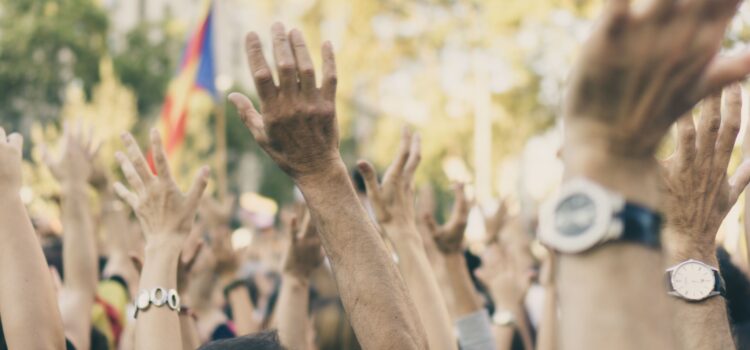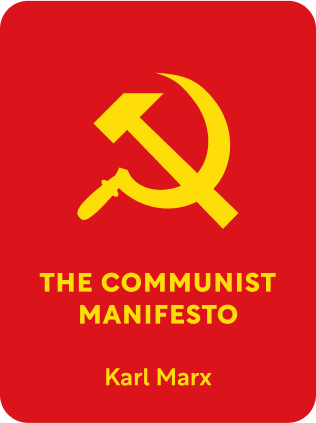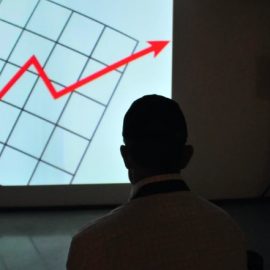

This article is an excerpt from the Shortform summary of "The Communist Manifesto" by Karl Marx. Shortform has the world's best summaries of books you should be reading.
Like this article? Sign up for a free trial here .
Are you looking for ways to begin understanding Communism? What is The Communist Manifesto, and can it help you understand Communist ideas?
A guide to The Communist Manifesto can help. The Communist Manifesto defined and described the original ideas of the Communist Party and is a great basis for understanding Communism and its core beliefs.
Start understanding Communism with this guide to The Communist Manifesto.
Understanding Communism
Manifesto of the Communist Party, better known as The Communist Manifesto, was originally published in German in 1848. It was commissioned by the “Communist League,” a worker’s party, and written by Karl Marx and Frederick Engels. Its goal was to explain the beliefs of the Communists and the program of the Communist League. It was translated into many languages and printed in many editions over the years. This summary is of the 1888 English translation. Understanding The Communist Manifesto can help you grasp these concepts and more. So what is The Communist Manifesto? Let’s find out.
Class Struggles
Understanding The Communist Manifesto first requires you to learn about the class struggle. In early human history, there were many different hierarchical classes. The class that controlled the economy—which, in the earliest times, was mainly the food supply—was the most powerful class. For example, in the Middle Ages, in order of least to most powerful, there were serfs, apprentices, journeymen, guild-masters, vassals, and lords. The lords owned the agricultural land that produced food. Anyone who wanted to grow or buy food had to serve the lords.
According to Marx, all of human history is based in class struggles between oppressors and the oppressed. For example, serfs struggled against lords. Each conflict ended in either change to the social system or ruin for both classes involved in the struggle. By the time the manifesto was written, however, the multi-class system had narrowed into two main classes—the Proletariat and the Bourgeoisie.
The Bourgeoisie employ laborers and own private property and businesses such as factories. This class can only maintain its existence by constantly improving production and growing the market, which they do by taking advantage of laborers, finding new markets, and more thoroughly exploiting old markets. None of this is sustainable, and the social conditions the Bourgeoisie have created will lead to their downfall.
The Proletariat is made up of people who sell their labor for wages. These wages are minimal and aren’t equal to the value of the work laborers produce. For example, if laborers build tables for a bourgeois company, the company will sell the tables for far more than what it paid for the materials and labor. The majority of people are members of the Proletariat.
The Proletariat will eventually revolt and overthrow the Bourgeoisie through a series of events: First, as the Bourgeoisie strives to improve production, they’ll decrease wages, push the lower middle class into the Proletariat, increasing its numbers, and concentrate laborers in central locations where they can organize. The Bourgeoisie will even give the Proletariat political power so that the Proletariat can support the Bourgeoisie’s political agenda against other classes. Then, the Proletariat will later use this power to oppose the Bourgeoisie. Finally, certain members of the Bourgeoisie will realize the Proletariat is the future and join them. There will be a revolution and the Proletariat will win.
Communists and the Proletariat
The Communists support the Proletariat and want to forcibly overthrow the Bourgeoisie. The defining feature of Communism is the desire to abolish bourgeois private property. Bourgeois private property wasn’t made or earned by a bourgeois individual—it was made by many laborers working together. Therefore, property should be common.
The Path Forward
Once the Proletariat has acquired political power, they’ll take the following ten measures:
- Abolish the ownership of land and put all land to public use. This will eliminate oppression and class conflict.
- Create a progressive or graduated income tax. This will spread wealth more equally among all members of the population and eliminate classes.
- Abolish inheritance. This will eliminate wealth being held by a few instead of distributed among everyone.
- Take away the property of emigrants and rebels. Emigrants who are living abroad and left possessions behind obviously aren’t currently using them, so they can be better used by the general population. Rebels who oppose the Proletariat also shouldn’t be allowed to have property.
- Create a national bank using state capital. Private banks simply hold money. A national bank could use money to improve social conditions.
- Put the state in charge of communication and transportation. If the state controls these things, rather than an oppressor, everyone will have access to them.
- Expand and improve the state’s control of infrastructure and land. Currently, people aren’t making good use of resources. The state can allocate resources in a way that most benefits everyone.
- Require everyone to work and require working conditions to be decent. This will result in everyone contributing to society.
- Decentralize jobs from cities by combining agriculture and manufacturing. This will reduce geographic inequity and make better use of resources.
- Abolish child labor, create public schools, and give all children free education. This will improve the lives of children.
(Shortform note: We’ve added explanations of each measure, based on widely-held interpretations.)
Responses to Criticism
Understanding Communism also requires that you know how to respond to criticisms of Communism. Here are some criticisms of Communists and how they respond:
- Communism encourages universal laziness. If abolishing private property led to universal laziness, everyone would already be lazy, because laborers make up most of the population and don’t have any private property.
- Communism abolishes culture, freedom, family structures, and countries. The Proletariat already lacks these things. The Bourgeoisie has abolished them all in the course of viewing laborers as commodities rather than people.
- Communism upheaves the educational system. The Communists simply want school to be available to everyone, not just the Bourgeoisie.
- Communism makes women collective property. This criticism is rooted in misdefinition. Because the Bourgeoisie consider their wives to be property or tools, when they hear the Communists say they want to abolish private property and use tools for the common good, the Bourgeoisie think that their wives are included. However, the Communists don’t consider women to be property or tools.
- Communism destroys religion. Religion’s ideas and values always change and evolve over time. Communism isn’t changing anything that isn’t already editable.
The Communist League and Other Groups
Part of understanding Communism is knowing the difference between Socialism and Communism. At the time of publication, the Manifesto of the Communist Party wouldn’t have been described as socialist. In 1848, Marx defines “socialists” as non-working class members who look for help from classes other than the ones they belong to. Socialists are interested in improving social conditions, and they think it’s possible to do so by improving the existing political system, rather than through the total social change the Communists call for. The manifesto discusses several kinds of socialism:
- Feudal and petty bourgeois (lower middle class) socialism. These socialists support the Proletariat, but only because the Proletariat have the best chance of taking down the Bourgeoisie, and because the Bourgeoisie were responsible for the fall of both the aristocrats and lower middle class. These socialists are interested in their own ends.
- German/“true” socialism. In 1848, the German Bourgeoisie class isn’t fully developed yet. As a result, German socialism is theoretical and based on French socialist literature. This socialism is more about human interests in general since Germany hadn’t experienced class struggle yet.
- Conservation/bourgeois socialism. These socialists realize that the social conditions the Bourgeoisie have created are unstable. They don’t want revolt, so they aim to appease some of the Proletariat’s social grievances and/or convince the Proletariat that all they need are better working conditions, not reform.
- Critical-utopian socialism. Critical-utopian socialists want to improve the lives of everyone, regardless of class. Currently, they support the Proletariat because it’s the most suffering class, but their allegiance is to whichever class is in the worst place, not the Proletariat specifically.
While Communist values don’t align perfectly with those of socialists, they do align with those of working class parties—the Communists support any movement that rebels against the social and political conditions of the day. The only differences between the Communists and working class parties are that the Communists are interested in the Proletariat on a larger scale—most parties are focused on specific countries or incidents, while the Communists are interested in the movement of class struggles as a whole. This is an important part of understanding Communism and understanding The Communist Manifesto.
Exercise For Understanding Communism
Communism supports the working class and aims to abolish private property. These questions can help you on your way to understanding Communism.
Do you think the world can still be organized into two classes, Proletariat or Bourgeoisie, or the oppressors and the oppressed? Why or why not?
What are the pros of the Communist viewpoint? What are the cons?
Are there situations in which the pros outweigh the cons? Why or why not?
Do you think any of the criticisms of Communism are valid? Why or why not?
How do Communist principles address the problems of modern-day capitalism, such as wealth inequality and extreme poverty? If you don’t think Communism can address modern-day problems, what are some alternative ways to address them
Now you know the answer to the question “what is The Communist Manifesto?” This guide can help you learn about this political ideology and more.

———End of Preview———
Like what you just read? Read the rest of the world's best summary of Karl Marx's "The Communist Manifesto" at Shortform .
Here's what you'll find in our full The Communist Manifesto summary :
- How the oppressors and the oppressed have been in conflict for all of human history
- How the communists planned to overthrow the ruling class and put in place a fairer system for all
- Five key criticisms of Communism, and how Communists respond






